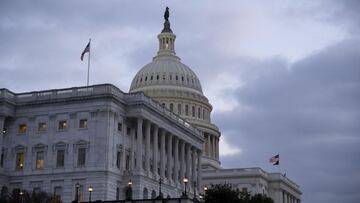How long did it take to pass second stimulus after the CARES Act?
Since the spring Americans have been waiting for more desperately needed coronavirus economic relief. But many are saying the 11th-hour deal isn’t enough.

The CARES Act was passed in the Senate on 25th March, two days later it also passed in the House of Representatives, signed into law by the president the same day. That’s nearly nine months ago, or 270 days to be precise.
Mnuchin: Stimulus checks will begin to arrive from next week
Treasury secretary Steven Mnuchin has told CNBC that he expects the first stimulus check payments to be sent out from the beginning of next week, meaning that some Americans will start receiving the support before the end of the year.
It has been nearly nine months since the first round of payments began and millions are in desperate need of further assistance. The $600 will arrive soon but there has not yet been any official confirmation on an expected start date for other provisions in the bill, such as the extended unemployment benefits.
"We're definitely in a much better position and there's no question the first bill — the CARES Act — is the reason why we're here today and the economy has continued to rebound," Treasury Secretary Steven Mnuchin says Americans will get stimulus checks as soon as next week. pic.twitter.com/uSnIUjQE0H
— CNBC (@CNBC) December 21, 2020
Who voted for and against the bill in Senate?
The covid-19 relief package comfortably passed the Senate with a 92-6 landslide, but there was push-back from Republican Senators. All six votes against came from GOP members. They were:
Marsha Blackburn
Rick Scott
Ron Johnson
Mike Lee
Rand Paul
Ted Cruz
6 Republican against voted against the relief bill:
— Kyle Griffin (@kylegriffin1) December 22, 2020
Marsha Blackburn
Rick Scott
Ron Johnson
Mike Lee
Rand Paul
Ted Cruz
Democrat Representative Tulsi Gabbard of Hawaii also voted against the bill – she explains why.
$600 is a slap in the face to every American struggling due to the pandemic. You deserve better.
— Tulsi Gabbard 🌺 (@TulsiGabbard) December 22, 2020
I voted against the 5,593-page spending bill that gave billions to corporate interests, the military industrial complex & other countries, leaving crumbs for you who need help most. pic.twitter.com/82F1HYF43T
Before the vote, Senator Rand Paul argued that the $900 billion relief bill was too large and increased federal debt, tweeting: "I will oppose this new debt, and I will continue to sound the alarm until we change our course here in Congress."
What ways are there to get your stimulus check?
The vast majority of the new $600 stimulus checks will be distributed using three methods, with different times of arrival expected:
1. First to arrive will be the direct debits, which are used for anyone whose details are on file with the IRS or who are recipients of Social Security benefits. The electronic transfers used are the quickest way to get the money.
Related stories
2. Those who are unable to submit their banking information will get the support through the post in the form of a physical stimulus check. This will take slightly longer because the checks need to be produced, checked, sorted and delivered.
3. For Americans without bank accounts, around four million people were sent VISA debit cards with their first stimulus checks pre-loaded onto them.


